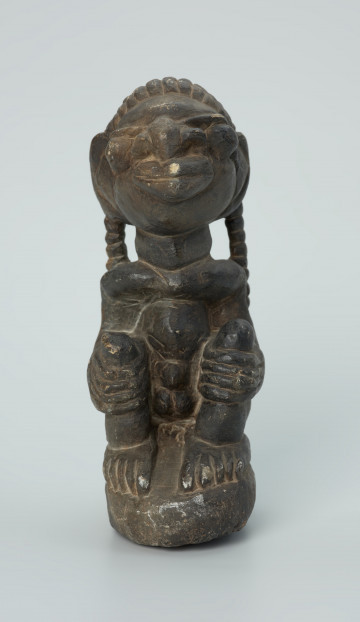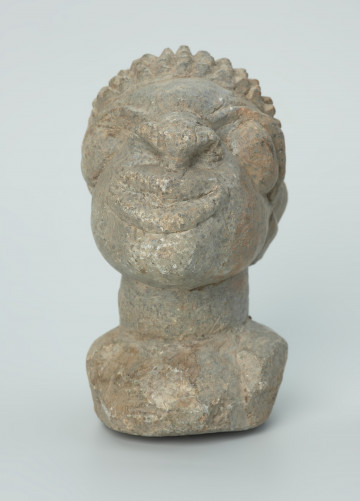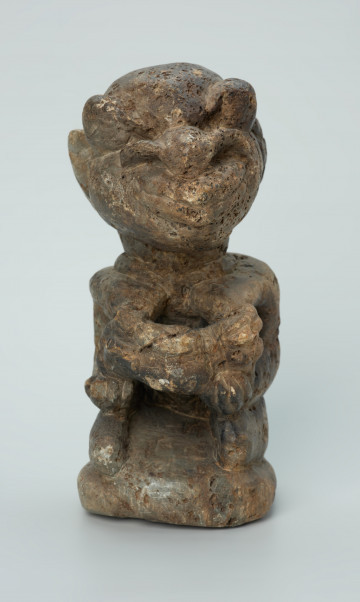
Figure of worship of forces of vegetation
1901 — 1971
National Museum in Szczecin
Part of the collection: Stone figurines from West Africa
The human figure carved in steatite probably represents a pregnant woman. The figure has a large, convex abdomen; on its sides, a total of four holes have been carved, while in the centre, a stone ball more significant than the holes has been placed.Stone figures found during agricultural work in Sierra Leone (, among others by the Sherbro, Temne, Mende, Limba, Kono people) are known primarily by the term taken from the Mende language nomolisia (singular nomoli). They are believed to have been made by earlier inhabitants of the area. Their original function is unclear, but some carvings, especially those decorated with jewellery, shields, weapons, and magical attributes, suggest that they may have initially represented cult figures, such as rulers, group leaders, and guardian spirits. The dating of nomolisia figures is also problematic. Stylistically, they resemble ivory sculptures made by Sierra Leonean artists for Portuguese patrons in the late 15th and early 16th centuries. However, no information about stone sculptures from Sierra Leone is recorded in Portuguese written sources. The physical construction of the nomolisia sculptures also seems somewhat mysterious, as some of them were equipped with metal or stone balls. The nomolisia sculpture in question has a visible, movable stone ball placed in its abdomen, probably symbolising a foetus. Among the nomolisia figures, there are also some in which perfectly round metal balls made of chrome and steel were hidden, visible only after the sculpture was cut open. The making of the metal balls required advanced technology, especially in obtaining high melting temperatures. Some researchers claim that the nomolisia sculptures originate from a much more advanced civilisation than previously thought.
Katarzyna Findlik-Gawron
Author / creator
Dimensions
cały obiekt: height: 17 cm, width: 8,6 cm
Object type
figure
Creation time / dating
Creation / finding place
Identification number
Location / status

1901 — 1971
National Museum in Szczecin

około 1970 — 1979
National Museum in Szczecin

1901 — 1971
National Museum in Szczecin
DISCOVER this TOPIC
National Museum in Szczecin
DISCOVER this PATH
Educational path